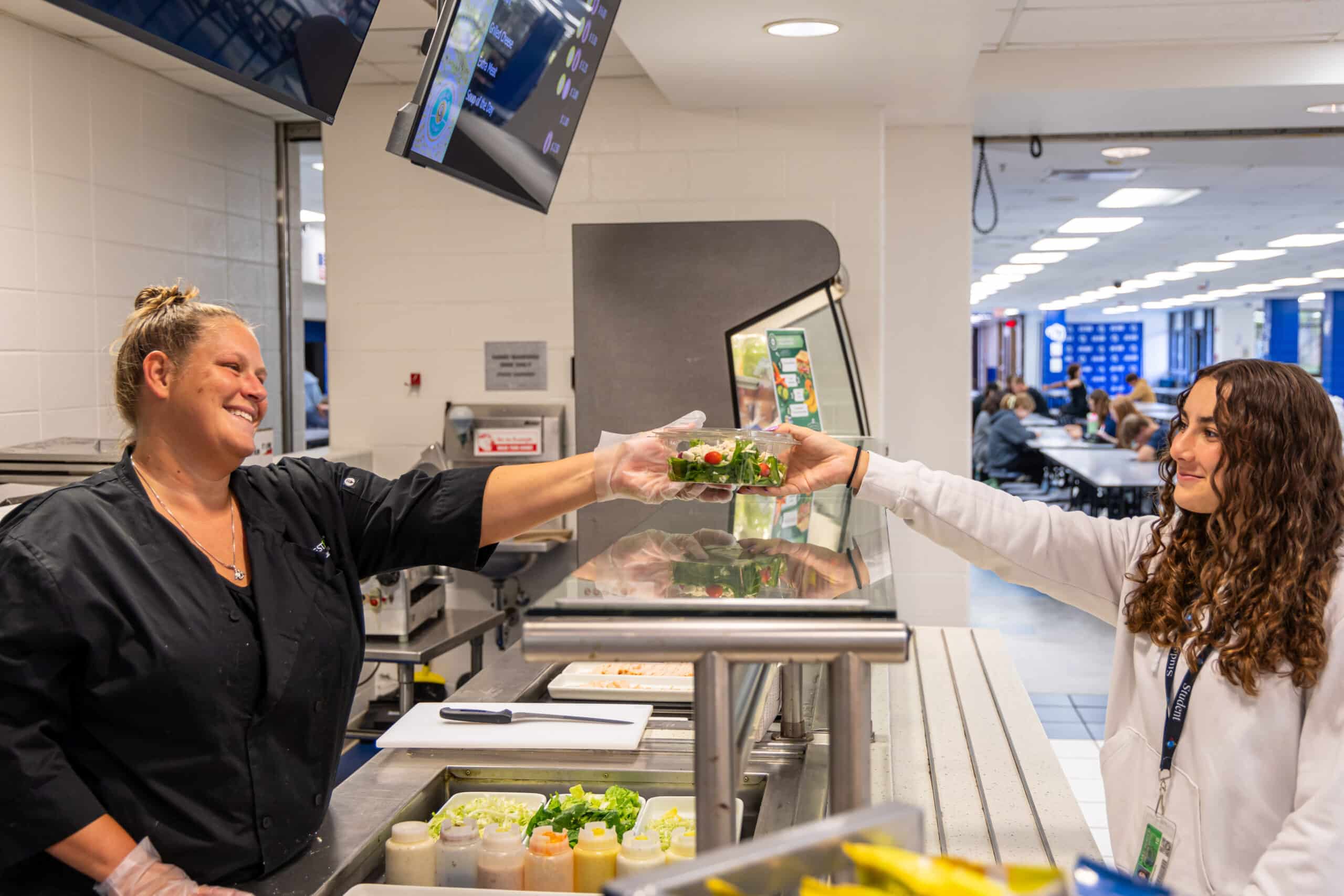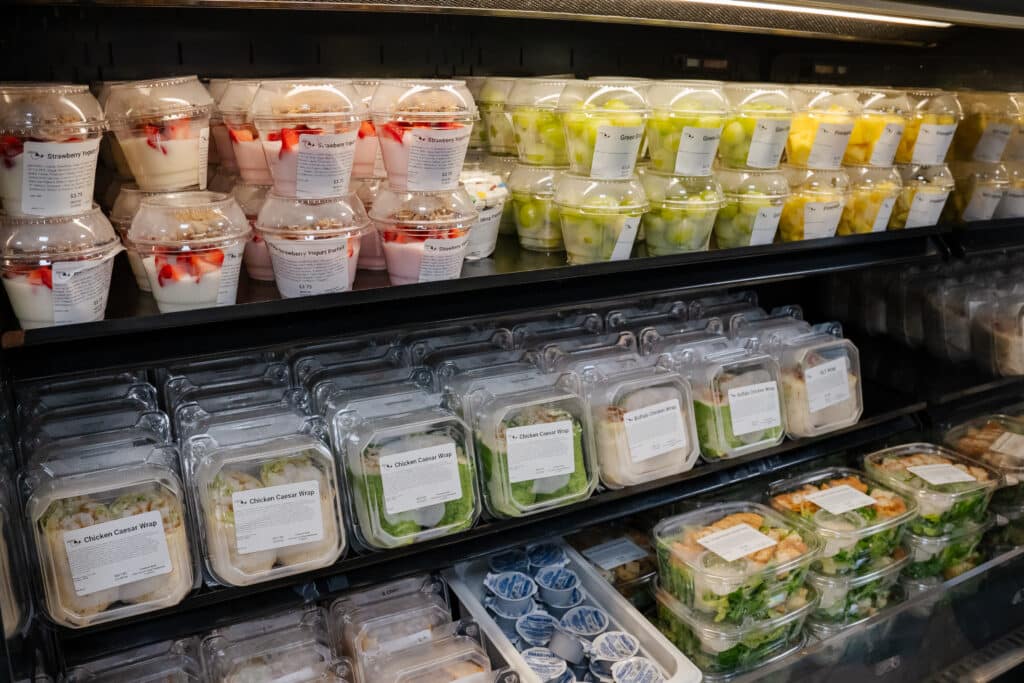Glenbrook High School district 225

Glenbrook High School District 225, home to Glenbrook North and Glenbrook South, is known for its academic strength and vibrant student life. With thousands of students to serve each day, food service is a critical part of the overall school experience. Dining programs do not just provide meals, they create community, influence wellness, and shape daily student life.
When District 225 partnered with Quest, the goal was to modernize its dining program by focusing on student satisfaction, innovation, and operational excellence. From the start, Quest and Glenbrook collaborated to build a program that reflects student tastes, responds to feedback, and operates efficiently. Over time, the partnership has become a model for how dining can enhance both student experience and district outcomes.
The Problem
Before the partnership, the district’s food service program faced challenges common to large schools:
- Evolving Expectations – Students wanted more diverse, fresh, and global dining options than traditional menus offered.
- Service Inefficiencies – Dining layouts led to long lines, leaving students less time to enjoy meals.
- Limited Feedback Loops – Without structured feedback, student voices were hard to capture consistently.
- Underperforming Catering – The catering process was outdated, limiting sales and community use.
District leaders needed a partner to reimagine dining in ways that balanced student engagement, operational efficiency, and financial growth.
Quest’s Solution

Student Centered Menu Innovation
Quest developed menus that reflected student preferences and evolving tastes, introducing options such as paninis, poke bowls, authentic barbecue, smoothies, and fresh grab and go selections. These additions brought new flavor, color, and choice to the café, encouraging students to explore a wider range of foods and return more often. By moving beyond standard offerings, the dining program felt fresh and relevant, creating an experience that better aligned with modern expectations and campus culture.
Café Style Spaces
Quest added new cafés at both schools, featuring espresso drinks, smoothies, and snacks that offered students convenient options throughout the day. Designed to mirror the look and feel of retail coffeehouses, these spaces created a warm and inviting atmosphere where students could study, relax, or meet with friends. Each café averaged more than one thousand dollars per day in sales, demonstrating strong demand and confirming their role as popular gathering spots on campus.

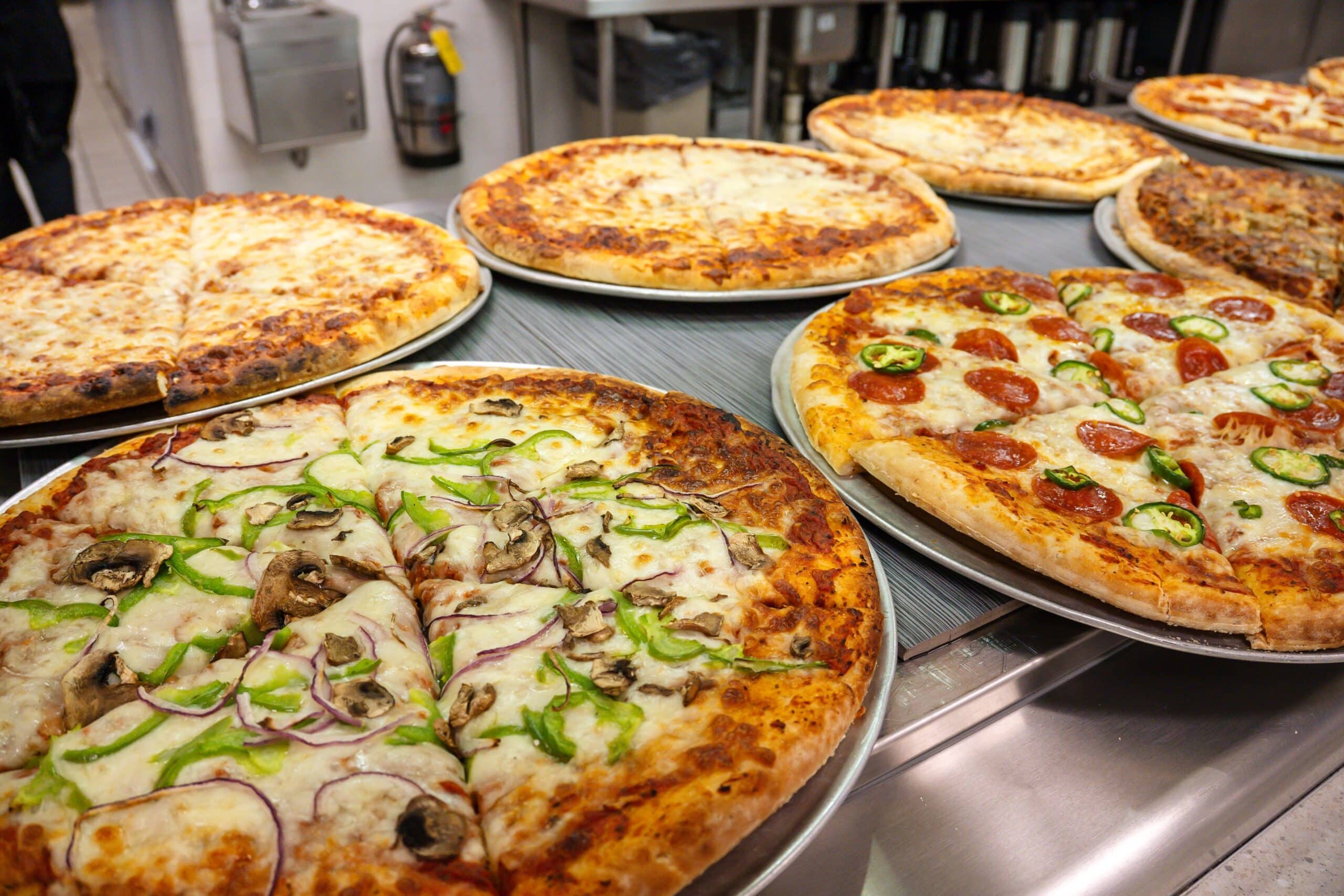
Faster and Smarter Service
Dining spaces were thoughtfully reconfigured to improve traffic flow and reduce wait times during busy periods. By minimizing bottlenecks and creating clearer pathways, students were able to move through stations more quickly and efficiently. This gave them more time to enjoy their meals, connect with peers, and settle into the space. The improved layout also created a calmer, more welcoming atmosphere that supported a better overall dining experience.
Technology Driven Catering
To better support growing demand for catering, Quest introduced an online ordering platform that simplified the entire process. Staff and community members could easily browse menus, submit requests, and coordinate event details, improving convenience and service responsiveness. As awareness and usage increased, catering became a more visible and accessible resource across the district, rising by 69% in three years.
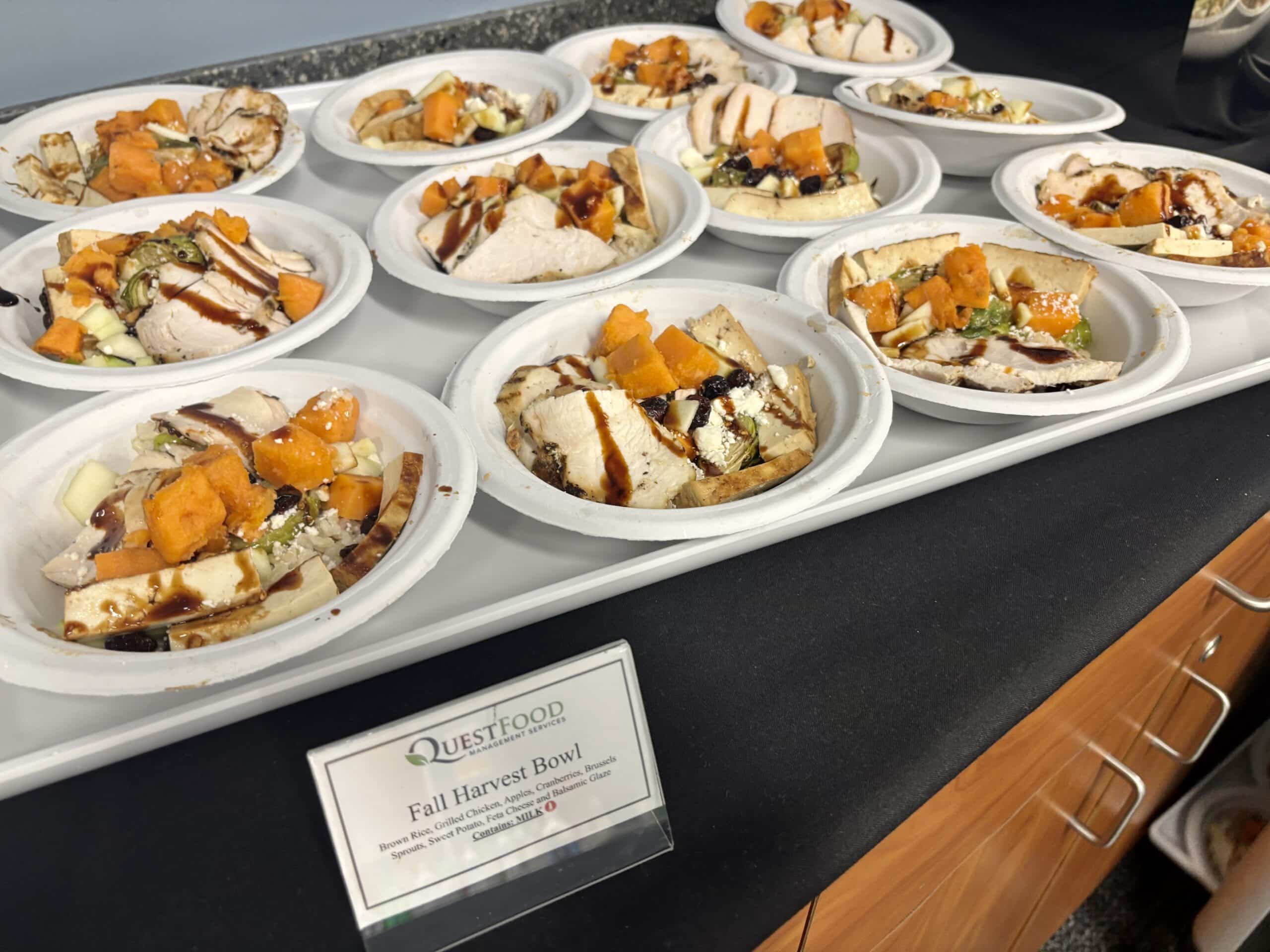
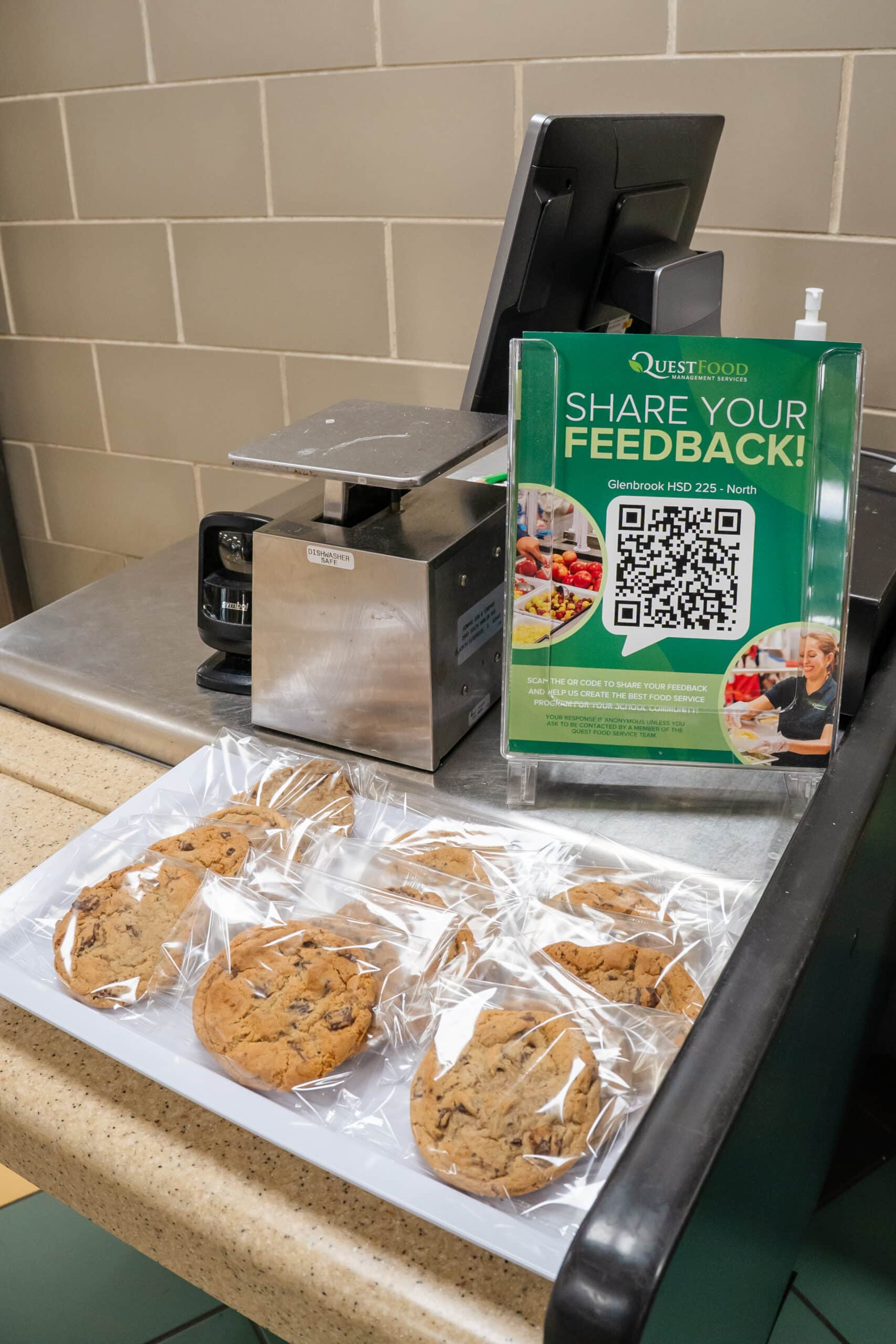
Feedback and Collaboration
Quest also strengthened collaboration and communication by establishing structured channels for continuous improvement. Student Food Committees provided a regular forum for sharing ideas and shaping menus, while Business Review Meetings with administrators offered a clear view of performance, priorities, and upcoming initiatives. This steady cycle of feedback built trust, encouraged shared ownership, and helped ensure the program stayed responsive to evolving needs.
The Result
The changes produced measurable success in revenue, student satisfaction, and operational outcomes.
The Glenbrook and Quest partnership demonstrates how a modern dining program can go beyond food service to become a strategic part of student life. By introducing fresh menu options, retail style cafés, improved layouts, and an online catering platform, Quest delivered both measurable results and meaningful experiences.
Key outcomes include:
- Expanded menu variety tailored to student preferences.
- Café sales exceeding one thousand dollars daily.
- A sixty nine percent increase in catering revenue.
- Overall revenue growth above four point one million dollars.
- Stronger engagement through structured feedback and collaboration.
Most importantly, the program reflects a shared commitment to putting students first. With Quest as a partner, Glenbrook has created a dining program that is innovative, financially strong, and student centered, positioned to evolve and succeed for years to come.



